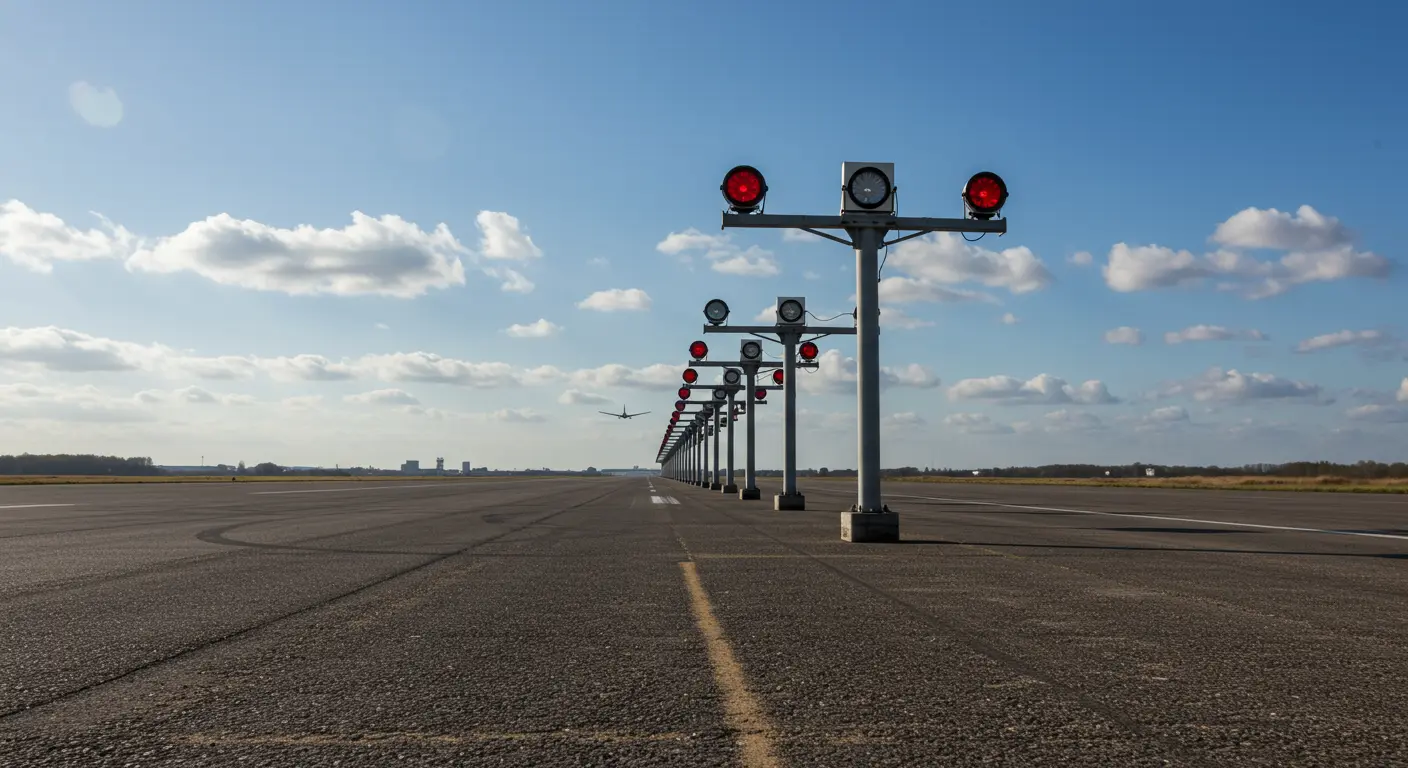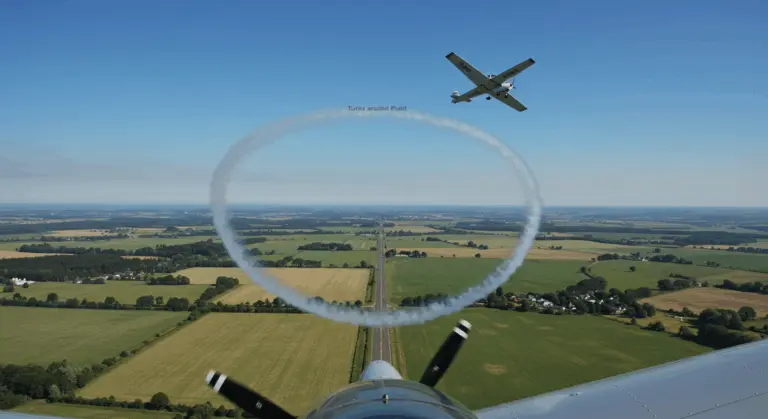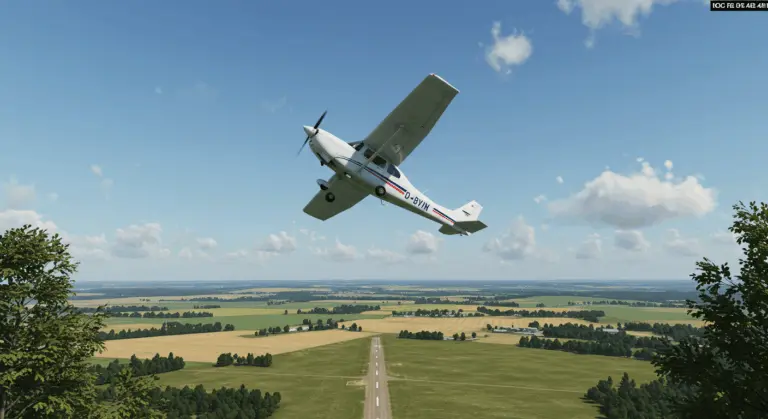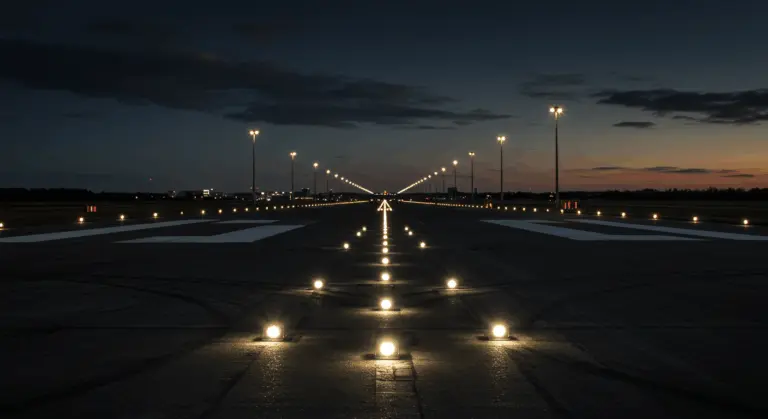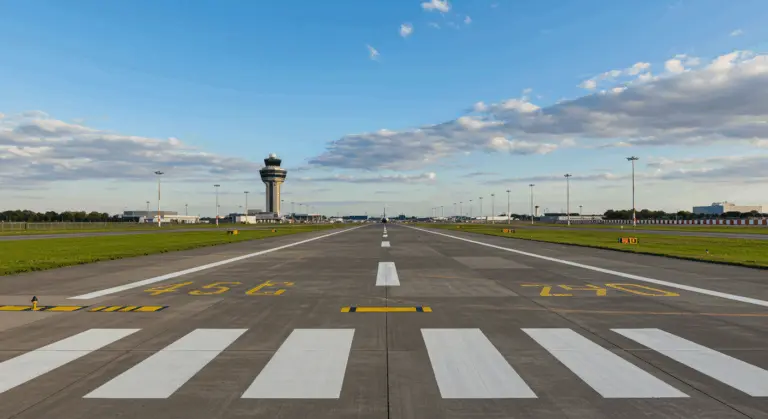PAPI Lights – Comprehensive Guide to Precision Approach Path Indicators
What are PAPI Lights?
PAPI (Precision Approach Path Indicator) lights serve as visual guidance systems strategically positioned beside airport runways. These precision instruments provide immediate visual cues to pilots, indicating their aircraft’s position relative to the optimal glide path during approach and landing phases.
Arranged in a single row, PAPI systems are positioned for optimal pilot visibility. The lights are visible from approximately 5 miles during daylight hours and up to 20 miles at night. This allows pilots to receive guidance well before commencing their final approach.
The system uses a simple color-coded language to communicate altitude:
-
Four white lights: The aircraft is too high.
-
Three white, one red light: The aircraft is slightly high.
-
Two white, two red lights: The aircraft is on the correct glide path.
-
One white, three red lights: The aircraft is slightly low.
-
Four red lights: The aircraft is dangerously low.
The system operates on a straightforward principle: more white lights become visible when the aircraft flies high, while more red lights appear when it’s low. PAPI systems provide safe obstruction clearance within ±10 degrees of the runway’s extended centerline, making them a vital safety feature.
How PAPI Lights Work
PAPI systems use a straightforward optical design to guide pilots during approach. The system consists of either two or four light units arranged in a single row perpendicular to the runway. Each light unit contains multiple components working together to create the distinctive red and white visual signals pilots depend upon.
A standard PAPI light unit features dual lamps for redundancy, ensuring continued operation even if one lamp fails. These lamps work alongside anodized aluminum reflectors that enhance light output and directional precision.
The system works through precise angular settings. Each light unit receives calibration at a slightly different angle, so a pilot maintaining the correct glide path (typically 3 degrees) observes an equal number of red and white lights. Any deviation from this path alters the observed color pattern, providing immediate feedback.
At larger airports, air traffic control (ATC) typically manages PAPI systems. However, at smaller or non-towered airports, pilots can activate the PAPI lights themselves using their aircraft’s communication radio.
PAPI Installation Guidelines
PAPI system installation follows specific regulatory standards to ensure safety and consistent performance. A standard installation features a bar of four light units positioned 15 meters (49 feet) from the runway edge, maintaining at least 14 meters (46 feet) of clearance from any taxiway.
The four units maintain uniform spacing of 9 meters (30 feet) apart. This precise spacing, combined with each unit’s slightly different calibration angle, creates the color transitions that guide pilots effectively.
Installation height is also important. Light units must be mounted at consistent elevation relative to the runway threshold, typically on frangible (breakaway) mounts designed to minimize aircraft damage during accidental impact.
Power and control systems for PAPI installations require backup power sources to ensure reliability. Most installations incorporate backup systems that activate automatically during primary power failures, ensuring continuous operation during critical landing phases.
Site preparation involves surveying for proper alignment and creating stable foundations that account for local soil and drainage conditions. Following installation, the system undergoes comprehensive calibration and flight testing before receiving certification for operational use.
PAPI Lights vs VAST
| Feature | PAPI (Precision Approach Path Indicator) | VAST (Visual Approach Slope Indicator) |
| :— | :— | :— |
| Configuration | Single horizontal bar of 4 light units. | 2 or 3 bars of 2 light units each, in a step-like arrangement. |
| Precision & Indications | High precision with 5 distinct light combinations for granular feedback. | Lower precision with only 3 possible light combinations. |
| Obstacle Clearance Range | Approx. 3.4 nautical miles from the runway threshold. | Approx. 4 nautical miles from the runway threshold. |
| Pilot Interpretation | A progressive mix of red and white lights indicates position relative to the glide path. | Two bars of lights appear as either red-over-red, red-over-white, or white-over-white. |
| Cost & Modern Use | Higher cost, but superior precision makes it the modern standard, often replacing VAST. | More economical with simpler maintenance, suitable for smaller airports. |
Safety Benefits of PAPI Lights
PAPI systems provide important safety benefits, making them essential components of modern runways. Their primary advantage lies in offering precise visual guidance during approach and landing, particularly in low-visibility conditions such as dusk, dawn, or adverse weather.
By providing standardized, easily interpreted visual cues, PAPI systems significantly reduce the risk of unsafe approach angles. They help prevent both shallow approaches that can cause runway overruns and steep approaches that may result in hard landings.
PAPI systems enhance situational awareness by offering reliable guidance where natural visual cues are misleading or absent. This is especially helpful over water or in mountainous terrain, where the horizon may deceive pilots.
The systems receive calibration to ensure aircraft following the indicated glide path maintain safe clearance from all obstacles in the approach corridor, thereby reducing collision risks.
LED PAPI Technology Advantages
The transition to LED-based PAPI systems marks a major advancement over traditional incandescent lights, offering many operational and safety benefits.
LED PAPI technology offers exceptional longevity, with operational lifespans reaching at least 40,000 hours compared to merely 2,000 hours for incandescent lamps. This 20-fold improvement reduces maintenance requirements, lowers costs, and increases system availability.
LED systems offer better energy efficiency, consuming less power while producing better light output. This combination reduces operational costs and minimizes the airport’s environmental footprint.
Pilots benefit from the enhanced visibility and sharper color definition of LED PAPI lights, which greatly improves guidance during poor weather conditions like fog, rain, or snow.
LED units show better reliability and durability, with better resistance to vibration, temperature fluctuations, and power variations.
LED technology allows advanced features including instant-on capability, dimming controls, and seamless integration with modern airport management systems, offering better operational flexibility.
History and Development of PAPI Lights
The PAPI system emerged in 1974, developed by British engineers Tony Smith and David Johnson to create a more precise visual landing aid for pilots.
Before PAPI’s development, airports primarily relied on the Visual Approach Slope Indicator (VAST) system, which had served as the standard since the 1950s. While VAST provided basic glide path information, aviation authorities recognized the need for a more refined system offering greater precision.
The UK’s Royal Aircraft Establishment (RAE) played a pivotal role in its development. Following successful trials, the International Civil Aviation Organization (ICAO) adopted PAPI as the recommended standard, leading to worldwide implementation throughout the late 1970s and 1980s.
The original design of a four-light bar has endured, though the technology powering these lights has evolved from incandescent bulbs to modern LED systems.
The biggest advancement came with LED technology introduction, which greatly improved energy efficiency, visibility, and operational lifespan.
Today, PAPI lights stand as essential safety equipment at airports worldwide, representing one of aviation’s most successful innovations for preventing landing incidents.

